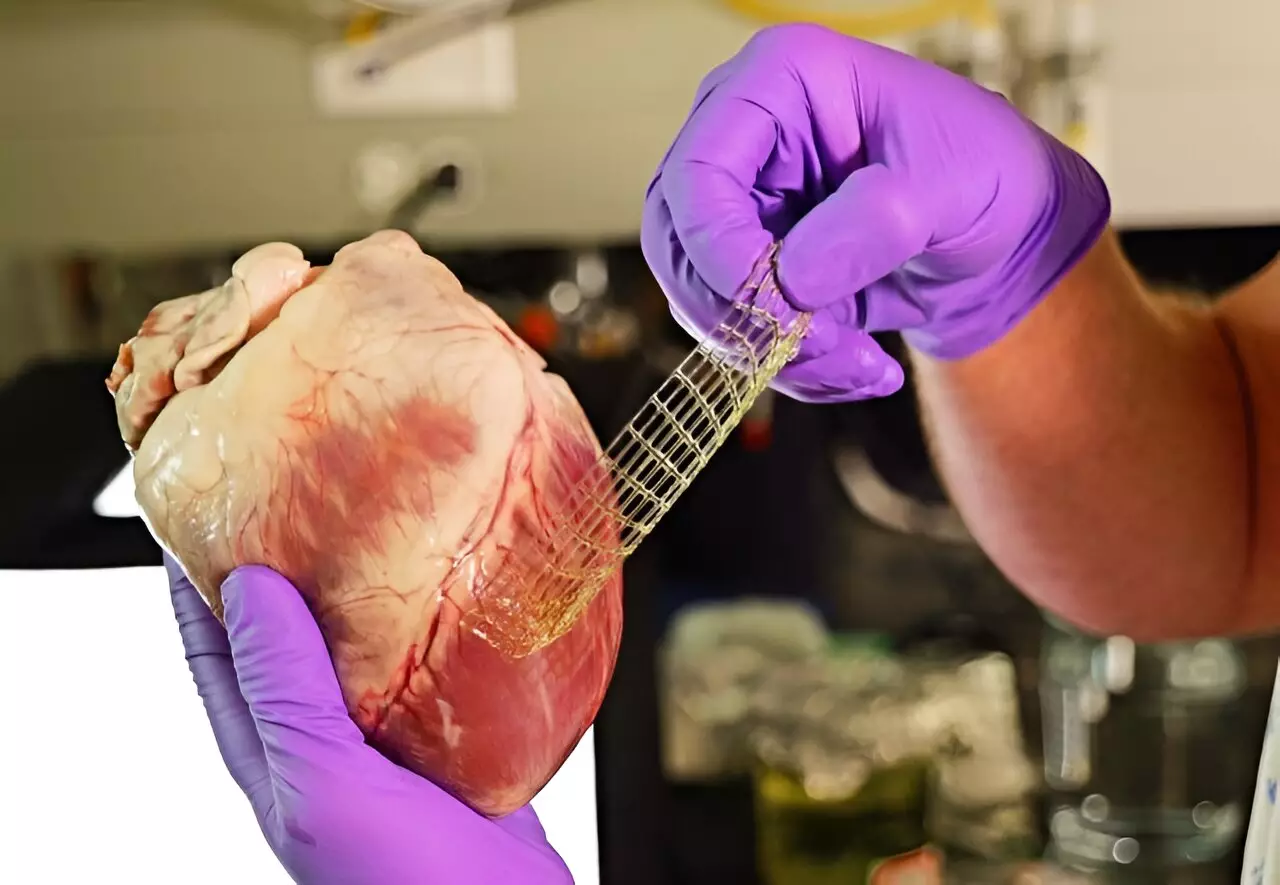The human body demonstrates remarkable complexity in its tissues, particularly in how diverse and capable they are in terms of strength and elasticity. However, despite the advancements in medicine, the quest to replicate these biological attributes in synthetic materials remains a significant challenge. Traditional methods of creating biomedical implants, like molding and casting, often fall short when it comes to personalization and adaptability. To bridge this gap, researchers at the University of Colorado Boulder and the University of Pennsylvania have embarked on a groundbreaking mission, culminating in a novel 3D-printing technique that promises to reshape how we address the deficiencies of damaged tissues in the human body.
The innovative 3D printing technique described by the researchers introduces a new paradigm for producing materials that possess the critical properties needed for biological compatibility. Their method focuses on developing hydrogels—soft, flexible materials that closely mimic biological tissues. Traditional hydrogels posed limitations; they often cracked under pressure or were too rigid to mold seamlessly around biological structures. The challenge was to create hydrogels that could both endure physical stresses and adapt to the unique contours of human anatomy.
Taking inspiration from the biology of worms and their ability to entangle, the scientists used a specialized printing process known as CLEAR (Continuous-curing after Light Exposure Aided by Redox initiation). This novel method allows the formation of entangled molecular structures within the hydrogel, enhancing their resilience and compliance. The result? Hydrogels that demonstrate superior elasticity and strength, capable of withstanding the constant stress encountered within dynamic environments like joints and hearts.
The implications of this research are vast, extending well beyond the realm of implantable devices. The newly developed materials have the potential to address a multitude of medical challenges, including delivering localized therapies, repairing damaged cartilage, and providing temporary structural support to injured areas. Additionally, the biodegradable nature of these materials offers an avenue for developing solutions that not only repair but also harmonize with the body’s natural healing processes.
Specifically, the capabilities of these 3D-printed materials extend to applications such as adhesive bandages that deliver medication directly to the site of injury, needle-free suturing solutions that minimize tissue damage, and even customizable implants designed to fit the unique physiological characteristics of individual patients.
Moreover, the researchers envision a future where this technology could lead to considerable advancements not just in medicine but also in various industrial applications. By eliminating the need for high-energy curing processes, the CLEAR method promotes environmental sustainability, which is an increasingly important consideration in modern manufacturing practices.
Challenges Ahead
Despite these exciting developments, there remain challenges to be addressed before these materials can see widespread clinical application. Ongoing research is essential to fully understand how human tissues will respond to these new materials over time and under various conditions. Furthermore, rigorous testing will be required to ensure that the materials are safe, effective, and compatible with the human body.
The researchers anticipate conducting additional studies to evaluate the interactions between these new hydrogels and biological tissues comprehensively. Such investigations will be crucial in determining not only the biocompatibility of these materials but also their long-term performance and durability within the human body.
The recent advancements in 3D printing technology spearheaded by scientists at CU Boulder and the University of Pennsylvania represent a critical leap forward in biomedical engineering. By developing hydrogels that can mimic the natural properties of human tissues, they have paved the way for innovative solutions that could vastly improve the quality of care for patients with tissue damage.
As the research progresses, the vision of a future where personalized medicine becomes a reality inches ever closer. The possibilities for applications in both medicine and beyond suggest a thrilling frontier in materials science that could redefine not only how we address bodily repairs but also how we think about the integration of technology and biology in our everyday lives.


Leave a Reply